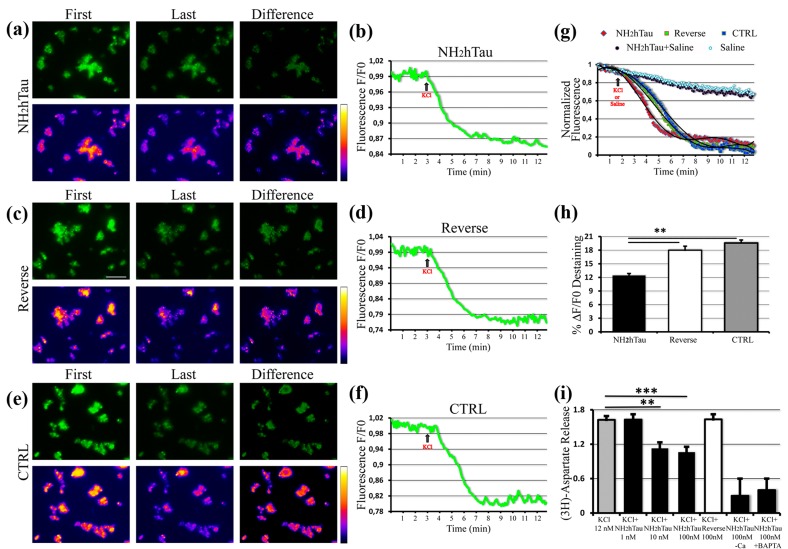Figure 4. NH2htau acutely inhibits the K+-stimulated presynaptic vesicles release and glutamate exocytosis in purified synptosomal preparations.
a.-b.-c.-d.-e.-f.-g.-h. K+-induced destaining of FM1-43 dye on isolated nerve terminals from mature (15 DIV) hippocampal neurons exposed to NH2htau (1µM), its reverse peptide (1µM), and saline (CTRL) 5 min before KCl (30mM) stimulus addition. a.-c.-e. Upper row: wide field images of treated synaptosomes. Lower row: false color vertically corresponding images (fire palette) which show the fluorescence intensity. Brighter spots correspond to functional presynaptic terminals. First is the image before KCl administration. Last is the image when the after-stimulus baseline is established. Difference is subtraction of the last image from the first one. Note that the yellow color is below the saturation level (i.e.white color). b.-d.-f. Representative traces of destaining time courses derived from the three experimental groups. g. Normalized, aligned and averaged fluorescence intensity traces derived from the three experimental groups (25 traces each) plus two saline(-KCl) additional controls. One, in the absence of both treatments and KCl stimulus, representing the fluorescence bleaching rate of our experimental setting. The other one, in the presence of NH2htau (1µM) and with saline added, showing that NH2htau alone is not able to induce significant destaining effects. Trend lines (black lines) superimposed to fluorescence intensity values of three experimental groups were calculated by polynomial fitting. h. Comparison of the average destaining percentage of the fluorescence intensity among the three experimental groups. In each experiment(n=5) two coverslips for each experimental group were analyzed. Values are means of at least three independent recordings and statistically significant differences were by one-way ANOVA followed by Bonferroni post-hoc test (**p<0,01versus NH2htau). Scale bar:15µm. i. The overall dose-effect of the NH2htau action (1-10-100nM) on glutamate release was evaluated by high-sensitive radioactive-based measure of depolarization-evoked release of [3H]D-Asp. Reverse sequence, used at the highest concentration(100nM) and saline-exposed untreated controls were also included. The K+-evoked tritium overlow is expressed as % of 12 mM KCl-evoked [3H]D-aspartate overflow versus saline-exposed untreated ctrl.Values are means of at least five independent experiments and data were considered statistically significant for p < 0.05 at least (**p < 0,01; ***p < 0,0001 versus saline-exposed untreated ctrl, one-way ANOVA followed by Bonferroni post-hoc test).

